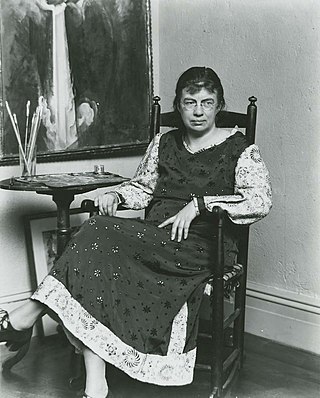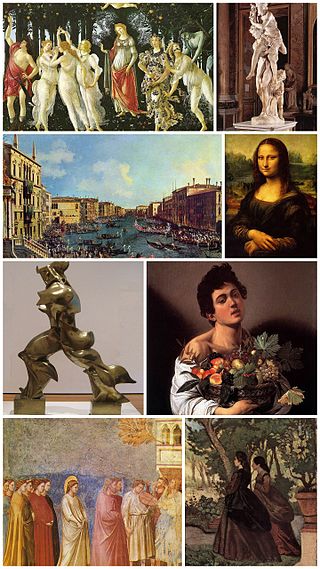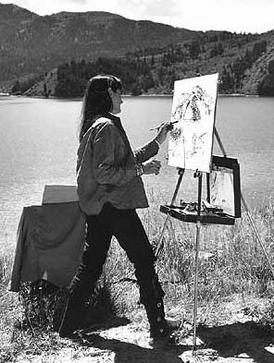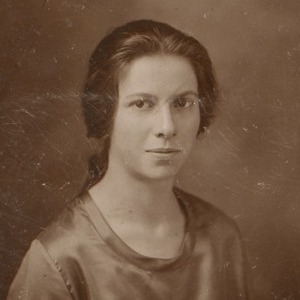Related Research Articles

Percy Wyndham Lewis was a British writer, painter and critic. He was a co-founder of the Vorticist movement in art and edited BLAST, the literary magazine of the Vorticists.

Neue Slowenische Kunst is a political art collective that formed in Slovenia in 1984, when the Socialist Republic of Slovenia was part of Socialist Federal Republic of Yugoslavia. NSK's name was chosen to reflect the theme in its works of the complicated relationship Slovenes have had with Germans. The name of NSK's music wing, Laibach, is also the German name of the Slovene capital Ljubljana. The name created controversy because some felt it evoked memories of the Nazi annexation of Slovenia during the Second World War. It also refers to Slovenia's previous seven centuries as part of the Habsburg monarchy.

Futurism was an artistic and social movement that originated in Italy, and to a lesser extent in other countries, in the early 20th century. It emphasized dynamism, speed, technology, youth, violence, and objects such as the car, the airplane, and the industrial city. Its key figures included the Italians Filippo Tommaso Marinetti, Umberto Boccioni, Carlo Carrà, Fortunato Depero, Gino Severini, Giacomo Balla, and Luigi Russolo. Italian Futurism glorified modernity and according to its doctrine, aimed to liberate Italy from the weight of its past. Important Futurist works included Marinetti's 1909 Manifesto of Futurism, Boccioni's 1913 sculpture Unique Forms of Continuity in Space, Balla's 1913–1914 painting Abstract Speed + Sound, and Russolo's The Art of Noises (1913).

Meyer Schapiro was a Lithuanian-born American art historian known for developing new art historical methodologies that incorporated an interdisciplinary approach to the study of works of art. An expert on early Christian, Medieval, and Modern art, Schapiro explored art historical periods and movements with a keen eye towards the social, political, and the material construction of art works.

The art world comprises everyone involved in producing, commissioning, presenting, preserving, promoting, chronicling, criticizing, buying and selling fine art. It is recognized that there are many art worlds, defined either by location or alternative definitions of fine art. Some may use the singular art world to refer only to the elite level of globalized fine art. The art world(s) are continually changing in response both to the creativity of those that create art and in response to social change.
The term fellow traveller identifies a person who is intellectually sympathetic to the ideology of a political organization, and who co-operates in the organization's politics, without being a formal member of that organization. In the early history of the Soviet Union, the Bolshevik revolutionary and Soviet statesman Anatoly Lunacharsky coined the term poputchik and later it was popularized by Leon Trotsky to identify the vacillating intellectual supporters of the Bolshevik government. It was the political characterisation of the Russian intelligentsiya who were philosophically sympathetic to the political, social, and economic goals of the Russian Revolution of 1917, but who did not join the Communist Party of the Soviet Union. The usage of the term poputchik disappeared from political discourse in the Soviet Union during the Stalinist era, but the Western world adopted the English term fellow traveller to identify people who sympathised with the Soviets and with Communism.
The American League Against War and Fascism was an organization formed in 1933 by the Communist Party USA and pacifists united by their concern as Nazism and Fascism rose in Europe. In 1937 the name of the group was changed to the American League for Peace and Democracy. Rev. Dr. Harry F. Ward headed the organization.

Wilhelm "Willi" Münzenberg was a German Communist political activist and publisher.

Marguerite Zorach was an American Fauvist painter, textile artist, and graphic designer, and was an early exponent of modernism in America. She won the 1920 Logan Medal of the Arts.

The John Reed Clubs (1929–1935), often referred to as John Reed Club (JRC), were an American federation of local organizations targeted towards Marxist writers, artists, and intellectuals, named after the American journalist and activist John Reed. Established in the fall of 1929, the John Reed Clubs were a mass organization of the Communist Party USA which sought to expand its influence among radical and liberal intellectuals. The organization was terminated in 1935.
American Abstract Artists (AAA) was founded in 1937 in New York City, to promote and foster public understanding of abstract art. American Abstract Artists exhibitions, publications, and lectures helped to establish the organization as a major forum for the exchange and discussion of ideas, and for presenting abstract art to a broader public. The American Abstract Artists group contributed to the development and acceptance of abstract art in the United States and has a historic role in its avant-garde. It is one of the few artists’ organizations to survive from the Great Depression and continue into the 21st century.

Novecento Italiano was an Italian artistic movement founded in Milan in 1922 to create an art based on the rhetoric of the fascism of Mussolini.
The American Artists' Congress (AAC) was an organization founded in February 1936 as part of the popular front of the Communist Party USA as a vehicle for uniting graphic artists in projects helping to combat the spread of fascism. During World War II the organization was merged into the Artists' Council for Victory, which effectively spelled the end of the organization.

Ethel Magafan was an American painter and muralist.

Gertrude Glass Greene was an abstract sculptor and painter from New York City. Gertrude and her husband, artist Balcomb Greene, were heavily involved in political activism to promote mainstream acceptance of abstract art. They were founding members of the American Abstract Artists organization.
Joseph Milton Leboit was an American graphic artist and psychoanalyst active in leftist politics.

The Artists Union or Artists' Union was a short-lived union of artists in New York in the years of the Great Depression. It was influential in the establishment of both the Public Works of Art Project in December 1933 and the Federal Art Project of the Works Progress Administration in August 1935. It functioned as the principal meeting-place for artists in the city in the 1930s, and thus had far-ranging effects on the social history of the arts in America.

John Opper (1908–1994) was an American painter who transitioned from semi-abstract paintings in the late 1930s to fully abstract ones in the 1950s. He became known for his handling of color and in particular his ability to create dramatic intensity on the picture plane by means of juxtaposed, more-or-less rectangular areas of color. He was associated with the abstract expressionist movement and frequently showed in galleries that specialized in abstract expressionist art. Late in life, he described his style by what it was not. He said, "The whole is the sum of its parts. That's what my school of abstract art is about, a school that evolved from nature, not conceptual, not geometric, not hard-edged. It's only art."
Vincent FitzGerald & Company is a New York-based publisher of handmade, limited edition artist books, individual prints, and portfolios. The firm was founded in 1980 by Vincent FitzGerald and has collaborated with over 150 artists, artisans, poets, and playwrights.
Dino Bigongiari was an Italian-American medievalist and Dante expert. He was the Da Ponte Professor of Italian at Columbia University.
References
- ↑ "Book Review: "The Third Reich in the Ivory Tower"". Columbia Magazine. Retrieved 2020-06-05.
- ↑ Norwood, Stephen H., "Complicity and Conflict: Columbia University’s Response to Fascism, 1933-37, Modern Judaism, Sept. 1, 2007, http://mj.oxfordjournals.org/cgi/content/full/kjm013v1 Archived 2008-07-23 at the Wayback Machine
- ↑ Monroe, Gerald M. (1973). "Art Front". Archives of American Art Journal. The Smithsonian Institution. 13 (3): 13–19. doi:10.1086/aaa.13.3.1557096. JSTOR 1557096. S2CID 222437809.
- ↑ O'Connor, Francis V. (1972). The New Deal Art Projects: An Anthology of Memoirs. p. 204.
- ↑ Art and Life in America, by Oliver W. Larkin - Art United States History – 1960, p. 410
- ↑ Henry Goddard Leach (Jan-Jun 1939). The Forum and Century, v. 101.
- ↑ "Congress of American Artists, 1941". Archived from the original on 2008-08-21. Retrieved 2008-03-30.
- ↑ American Magazine of Art. Vol. 29 #4. April 1936. "Aesthetic Freedom and the Artist' Congress" by Peppino Mangravite.
- ↑ "The American Artists Congress and the Invasion of Finland". Gerald M. Monroe. Archives of American Art Journal. Vol. 15, No. 1. (1975), pp. 14-20. JSTOR 1557148